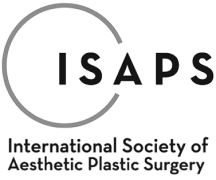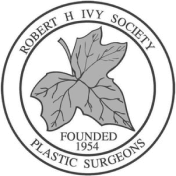Ear Surgery & Ear Pinning (Otoplasty)
What is ear surgery (otoplasty)?
Otoplasty, or ear surgery, is a cosmetic procedure to improve the appearance of a person’s ears. Otoplasty is most commonly performed to set unusually prominent ears back closer to the head, called ear pinning, or to reduce, enlarge, or enhance abnormally-sized ears.
Otoplasty procedures can be performed on patients of nearly all ages, from early childhood on into late adulthood. Whatever the patient’s age, the goal is to achieve a streamlined and symmetrical ear appearance from all angles while preserving ear functionality. Although otoplasty does not affect hearing, it can provide great psychological benefits.
Dr. R. Brannon Claytor
Dr. Claytor is board certified by the American Board of Plastic Surgery and holds over 20 years of experience as a cosmetic plastic surgeon. An innovator and teacher in the field of plastic surgery, he uses advanced techniques like the drain-free tummy tuck and deep plane facelift to streamline recovery and provide natural-looking, durable results.




Who are the best candidates for ear surgery?
Prominent or misshapen ears, often present at birth, can attract unwanted social attention and lead to a poor self-image. Plastic surgery to improve ear contours can alleviate this concern for people of all ages, helping patients to regain confidence and a healthy self-esteem.
The best candidates for otoplasty are adults, adolescents, or children over age 5 with ears that stick out or project from the head. It is also helpful for patients with abnormally large ears, long ear lobes, folded ear tips (“lop ears”), and even abnormally small ears. Lastly, the procedure can also be used to revise previous surgery or to repair ears that have been damaged by injury or disease.
“Dr. Claytor was very professional and great to work with. After many failed attempts to have my keloids removed from my cartilages, (piercing) I decided to schedule a consultation with Dr. Claytor. He was very welcoming, caring , honest and informative in every appointment I had with him including my surgery. I am so happy with my results and I can finally wear my hair up without feeling self conscience about my ears. Dr. Claytor is the best and I would never look elsewhere! I am keloid free for the first time in 10 years!”
How long does ear surgery take?
An otoplasty procedure generally lasts 1 to 2 hours and is performed on an outpatient basis. The type of anesthesia used typically depends on the age of the patient.
- Key Benefits
- Glossary
- Improved Symmetry: Ear surgery, or otoplasty, can enhance the symmetry of protruding or asymmetrical ears, creating a more balanced facial appearance.
- Natural-Looking Results: Skilled otoplasty can provide a natural appearance, avoiding a “pinned-back” or overly surgically altered look.
- Minimal Scarring: Techniques like the incision hidden behind the ear or within natural creases can result in inconspicuous scars.
Otoplasty (ear reshaping, cosmetic ear surgery, or ear pinning): Surgical procedure to alter the size, position, or shape of the external ears, especially prominent ears.
Auricle/Pinna: The visible part of the ear that resides outside of the head.
Cartilage: A firm, yet flexible connective tissue found in various parts of the ear.
Earlobe: Lower, fleshy part of the ear that is often the site of piercings.
Conchal Cartilage (concha): The cartilage in the bowl-shaped part of the ear.
Cauliflower Ear: Deformity of the ear caused by trauma, typically seen in wrestlers and boxers.
Incisionless Otoplasty: A minimally invasive procedure that doesn’t require skin cuts.
Bilateral Otoplasty: Surgery performed on both ears.
Ear Splints: Devices used postoperatively to maintain the new shape of the ear.
Mastoid Area: The region located behind the ear where surgical incisions may be made.
Anthelix: Inner rim of the ear.
Scapha: The groove between the helix and the antihelix.
Suture Techniques: Procedures involving stitches to close up incisions or wounds.
Anesthesia: Medication administered to prevent pain during the surgical procedure.
Local Anesthesia: Anesthesia that numbs a small, specific area of the body.
What is the average cost of ear surgery for patients in Philadelphia?
The cost of ear surgery depends on the overall needs of the patient and also will include anesthesia, operating room facilities or plastic surgeon’s fees. All of these fees will be provided by our practice and reviewed during your personal consultation.
While ear pinning surgery is an investment, our patients in Philadelphia have several financing options to make it more affordable and convenient.
Will I need anesthesia for my otoplasty procedure?
The otoplasty begins with a small incision made behind the ear. General anesthesia is recommended for very young patients of ear pinning surgery, while local anesthesia and a sedative may be used for older children and adults.
“Dr. Claytor is a miracle worker!! I was the victim of an assault that basically left me with my ear in 2 pieces and almost destroyed. Dr. Claytor was called to the emergency department and very meticulously put my ear back together in one surgery. There was no need for any additional procedures. I got my life back quickly thanks to he’s attention to detail and dedication to his craft of plastic surgery. In addition, everyone of his staff members is incredibly friendly and professional, I highly recommend his services. Thank you Dr. Claytor!”
What is ear surgery recovery like?
Patients usually feel back to normal a few hours after the procedure, although the ears may ache or throb for a few days. Prescription medication will be made available to help alleviate any discomfort. A few days after the otoplasty, the bandages will be replaced with a surgical dressing that should be worn for about a week after which time the stitches will be removed.
What facial procedures complement ear pinning surgery?
Depending on the patient’s individual needs and goals, otoplasty may be performed alone or in conjunction with other procedures to improve overall facial harmony and balance or achieve a more youthful, desirable appearance. Here are some popular facial procedures that may complement the results of ear-pinning surgery:
Non-surgical treatments such as injectable dermal fillers may also be a great complement to otoplasty surgery.
It’s important to note that the specific procedures that complement an otoplasty will vary depending on the patient. A consultation with a board certified plastic surgeon like Dr. Claytor can help determine the best course of treatment for each individual patient’s needs and aesthetic goals.
“Dr Claytor and his entire staff have been over the top outstanding and kind from the beginning. (From my initial consultation- pre surgery -during surgery- post surgery) They are all professional, treated me with kindness, and made me feel at ease. If I ever needed them or had questions they were always available. I would 100% go back to them if I ever decide to have another procedure done and would recommend them to everyone. During my initial consultation I was able to see the entire facility and see where I’d be operated on which made me feel at ease and know this was the right doctor for the job with Impeccable bedside manners. I came Dr Claytor for otoplasty as an adult. My protruding ears bothered me my whole life. When I saw my new ears after surgery I was overjoyed with gratitude. (and many tears of joy). He did an amazing job. I am enterally grateful. Thank you everyone.”
What are typical otoplasty results?
Otoplasty can help patients achieve a more symmetrical ear appearance and improve the overall visual balance of facial features. Although otoplasty does not affect hearing, it has been proven to provide powerful psychological benefits.
Why choose Dr. Claytor for your plastic surgeon?
Double Board-Certified for a high level of safety and precision
Chief of Plastic Surgery at Main Line Health, a top health system
Board Member of The Aesthetic Society, shaping the future of aesthetics
8x Philadelphia Magazine Top Doctor for exceptional patient care
Recognized as one of America’s Best Plastic Surgeons by Newsweek
Drain-free recovery expert for faster, more comfortable healing
Deep plane facelift innovator and global educator
Active researcher in surgical and non-surgical aesthetic advancements
Highly regarded for his surgical expertise and outcomes, as well as his dedicated follow-up care





For more information on ear surgery (otoplasty), or any of our other facial cosmetic procedures, call Dr. Claytor at (610) 527-4833 today and schedule your personal consultation! Dr. Claytor serves Philadelphia, PA and surrounding areas of the Main Line.
References »
Siegert R, Magritz R. Otoplasty and Auricular Reconstruction. Facial Plastic Surgery & Aesthetic Medicine. 2019 Aug;35(4):377-386. doi: 10.1055/s-0039-1693745.
Hoshal SG, Morisada MV, Tollefson TT. Reducing Surgical Risks for Otoplasty. Facial Plastic Surgery Clinics of North America. 2023 May;31(2):253-261. doi: 10.1016/j.fsc.2023.01.011.
Ordon A, Wolfswinkel E, Shauly O, Gould DJ. Aesthetic Otoplasty: Principles, Techniques and an Integrated Approach to Patient-Centric Outcomes. Aesthetic Plastic Surgery. 2019 Oct;43(5):1214-1225. doi: 10.1007/s00266-019-01441-2.
Handler EB, Song T, Shih C. Complications of otoplasty. Facial Plastic Surgery Clinics of North America. 2013 Nov;21(4):653-62. doi: 10.1016/j.fsc.2013.08.001.
Stewart KJ, Lancerotto L. Surgical Otoplasty: An Evidence-Based Approach to Prominent Ears Correction. Facial Plastic Surgery Clinics of North America. 2018 Feb;26(1):9-18. doi: 10.1016/j.fsc.2017.09.002.
Areas Served:

Medically reviewed by Dr. R. Brannon Claytor — Updated on Mar 3, 2025


